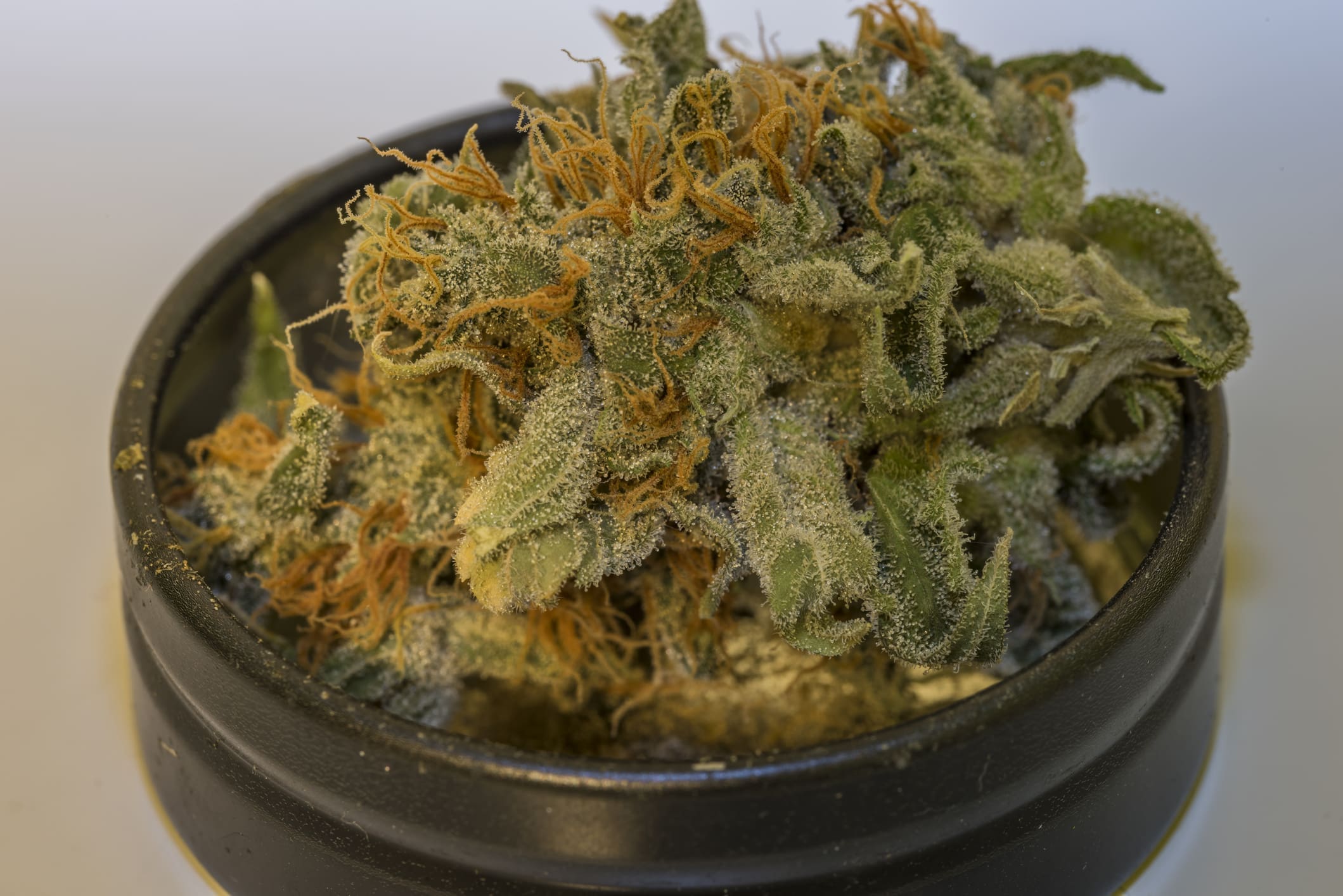hashishene stands out for its unique character and medicinal value: amidst the complex choreography of compounds contributing to the cannabis experienc. This cannabis terpene, prevalent in the resin of Cannabis sativa, emblazons the noteworthy ‘hashish flavor’ appreciated by enthusiasts of resin extracts worldwide. Originating from the transformation of beta-myrcene—a terpene known for its delightful aroma—hashishene materializes through the intricate processes of drying, curing, and oxidation, which adeptly modify the terpene profile of cannabis.
Advocates of the herb commend myrcene for its ability to alter cell membrane permeability. It is theorized to bolster cannabinoid uptake in the brain and thus modulate the impact of compounds like THC and CBD. Myrcene’s therapeutic influence spans muscle relaxation, analgesia, and antimicrobial activity. Conversely, hashishene, almost exclusive to cannabis, especially in hashish exposed to the sanctifying rays of the sun during preparation, embodies the intricate alchemy of nature and tradition.
Key Takeaways
- Hashishene cannabis terpene delivers the unmistakable ‘hashish flavor’ pivotal to the scent profile of many cannabis extracts.
- Birthed from beta-myrcene, hashishene’s creation is catalyzed by drying, curing, and oxidation, demonstrating nature’s transformative artistry.
- The enhancement of cannabinoid brain absorption by myrcene could be mirrored in the effects of hashishene, underscoring its contribution to the cannabis experience.
- Hashishene holds medicinal value, with potential therapeutic applications stemming from its parent compound’s known benefits.
- Its relative exclusivity to cannabis, heightened by traditional production techniques, underscores the compound’s cultural and scientific significance.
- Exploration of hashishene enriches our understanding of the terpene profile of cannabis, promising insights into its health and wellness applications.
Molecular Structure and Classification Of Hashishene
Setting itself apart in the world of cannabis terpenes, hashishene demands attention due to its unique origin and structural characteristics. Its scientific denomination, 5,5-dimethyl-1-vinylbicyclo[2.1.1]hexane, reveals a molecular kinship with beta-myrcene, sharing an identical molecular formula and molar mass, C10H16. Despite the similarities in their core composition, the structural divergence of hashishene is pivotal to its distinctive qualities.
The genesis of hashishene’s molecular structure is fascinating, resulting from the transfiguration of beta-myrcene when subjected to natural elements. Sunlight acts as a catalyst, causing a rearrangement in the molecular architecture within the beta-myrcene. This photochemical reaction transpires during the artisanal process of hashish production, leaving an indelible mark on the volatiles in cannabis concentrates.
To comprehend the sophistication and intricacies of hashishene’s molecular presence, scientific techniques like headspace solid-phase microextraction (HS-SPME) and advanced chromatographic analysis, including gas chromatography-mass spectrometry (GC-MS) and comprehensive two-dimensional gas chromatography-mass spectrometry (GC×GC-MS), are deployed. These methods have illuminated marked differences in the terpene profiles of hashish compared with untreated cannabis samples, accentuating the dominance of hashishene in the former.
- A distinct molecular fingerprint is associated with hashishene, rendering it a chemical beacon within terpene classification.
- beta-myrcene serves as the precursor, bridging the gap between simple terpenes and complex volatiles in the domain of cannabis derivatives.
- Hashishene’s formation, through the transformation effected by solar energy, is pivotal to its augmentation in the terpenic spectrum.
This intricate overlay of relations and transformations highlights the meticulous nature of terpene classification. Hashishene stands as a testament to nature’s alchemy, enhanced through traditional production techniques, offering a profound depth to the understanding of the volatiles present in cannabis.
Identifying the Distinctive Scent Profile in Cannabis Strains
Within the rich tapestry of cannabis aromas, the distinctive scent profile of Moroccan hash stands out, primarily due to the presence of a unique terpene in cannabis known as hashishene. The qualities that define this scent profile owe a great deal to the terpene’s unique formation and subsequent hashishene effects that influence a user’s sensory experience.
Hashishene’s rarity stems from its specific formation conditions, which include the drying of cannabis under UV light, with the introduction of oxygen, reflecting traditional Moroccan practices. Cultivated under these particular circumstances, hashishene emerges as the aromatic marker that imparts an earthy and floral nuance, distinctive of Moroccan hash. This complex aroma is a hallmark of the strain’s quality and an indicator of its provenance, acknowledging the rich cultural heritage of cannabis cultivation in the region.
The increasing popularity of Moroccan hash across Europe can be partly attributed to the appreciation of its nuanced and rich terpene profile. Not only does hashishene contribute to the aroma and flavor, but it also has the potential to modify the psychoactive qualities of the hash, thereby influencing the overall cannabis experience. Below is a comparative outline of hashishene’s signature scent contributions:
- Earthy undertones: Hashishene adds a robust foundation, reminiscent of the aroma of petrichor, thus enhancing the primal connection users feel to the substance.
- Floral notes: The terpene imparts subtle floral hints that elevate the complexity of the hash’s profile, often compared to the scent of wildflowers.
- Quality indicator: Connoisseurs often use the presence and intensity of hashishene’s scent to gauge the quality of the hash, with more pronounced notes suggesting higher purity.
- Geographical signature: Hashishene, as an aromatic marker, ties the scent directly to Moroccan hash, providing an olfactory means of identification.
This distinctive combination of attributes anchors hashishene as a key contributor to the aromatic identity of traditional Moroccan hash and its psychoactive properties, allowing it to occupy a prestigious place within the terpene profiles of world-renowned cannabis products.
Hashishene Cannabis Strains
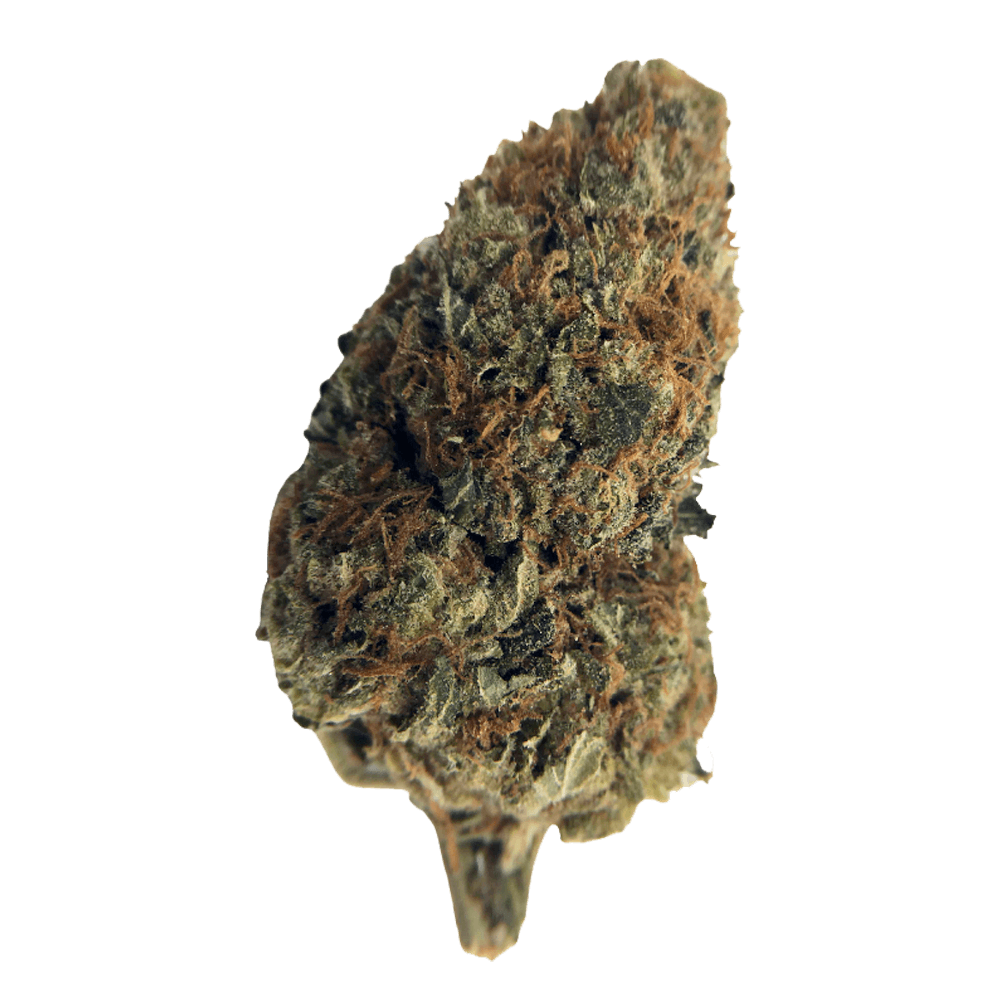
AK-47
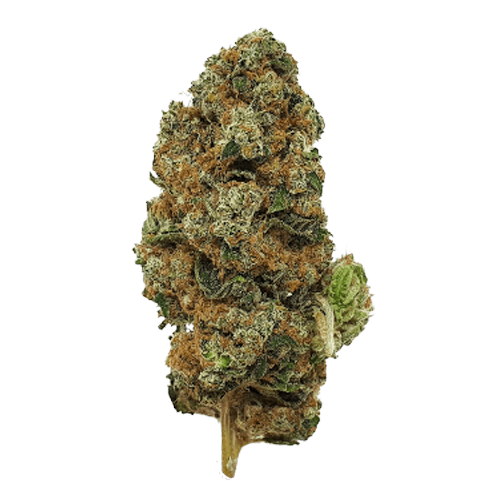
Banana Mac
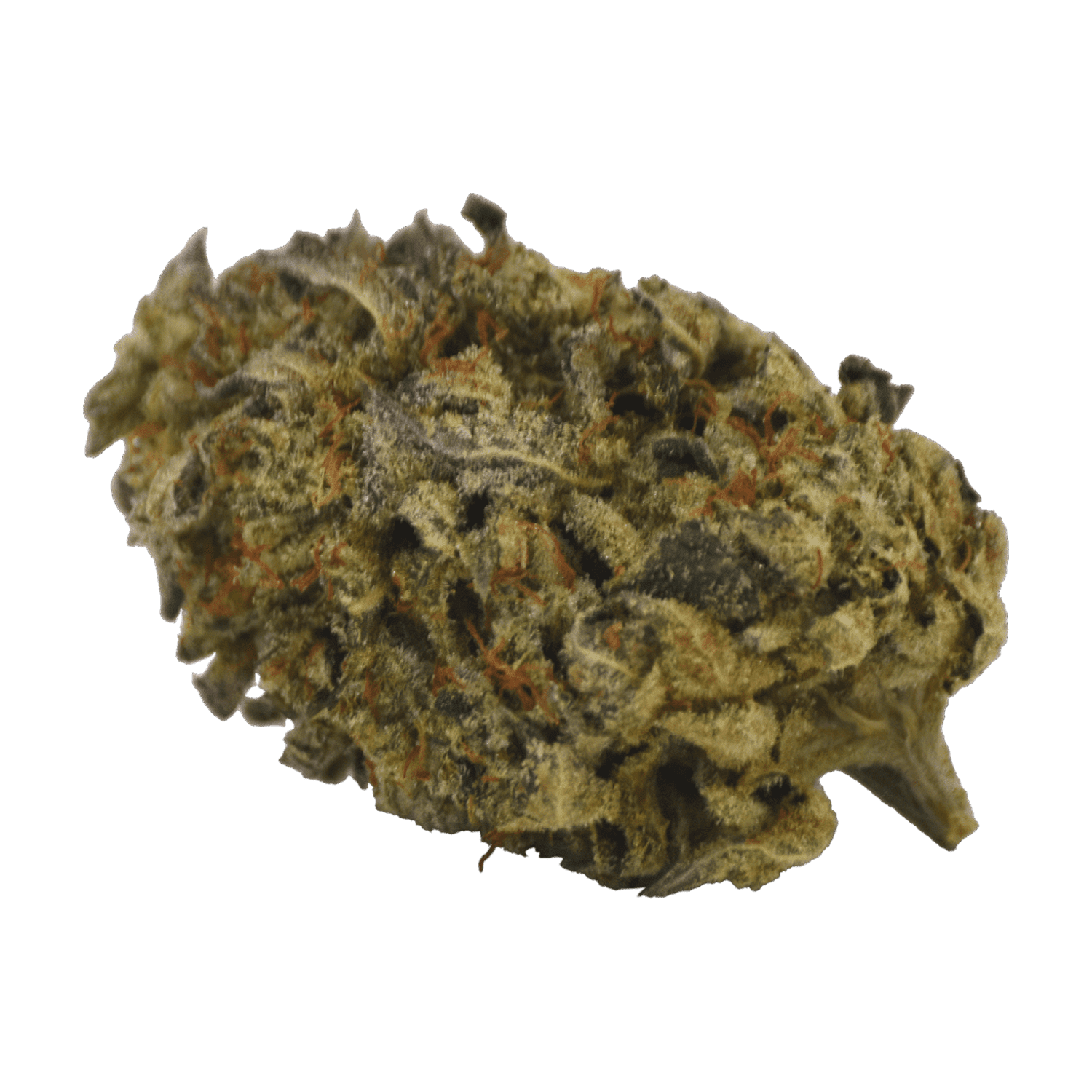
Khalifa Mints

Khalifa Mints
Hashishene’s Role in the Endocannabinoid System and Potential Therapeutic Benefits
Emerging research into the influence of hashishene on the endocannabinoid system offers potential insights into how terpenes may enhance the efficacy of cannabis. As the understanding of hashishene’s role continues to unfold, a fascinating aspect being examined is its possible interaction within the framework of the entourage effect. Representing more than just a component of the complex cannabis terpene profiles, hashishene, derived from myrcene, is under scrutiny for its interplay with cannabinoids, which could have far-reaching implications for therapeutic applications.
- Interaction with Cannabinoids: Initial findings suggest that hashishene, alongside other cannabis terpenes, may assist in the modulation of cannabinoid receptor activity, contributing to a strengthened entourage effect.
- Pain Management: Early assessments indicate the potential for hashishene to participate in pain relief. Its therapeutic benefits are being studied, with initial reports hinting at analgesic properties which could aid those suffering from chronic pain.
- Anti-inflammation: Exploratory studies review the possibility that hashishene may exert anti-inflammatory effects, providing a boon for those with inflammatory conditions.
- Psychoactive Modulation: Reflecting on the role of myrcene in altering the psychoactive effects of THC, researchers are intrigued by how hashishene might similarly affect the cannabis experience.
- Neural Homeostasis: Interest in hashishene extends to its potential to contribute to neural balance, potentially offering benefits for mood regulation and anxiety reduction.
While the specific mechanisms whereby hashishene impacts the endocannabinoid system are yet to be conclusively identified, its emergence in scientific literature is driving forward a review of cannabis terpenes and their multifaceted effects. The intriguing therapeutic benefits of terpenes as a whole, and hashishene in particular, remain an exciting field of enquiry within cannabinoid science, positing a future where cannabis may be further tailored to individual therapeutic needs.
The Prevalence and Significance in Different Strains
Traversing the aromatic landscape of cannabis, it’s clear that the terpene profile of each strain confers a unique sensory palette that shapes the user’s experience. Among these, hashishene stands out, primarily noted in specific cannabis variants, particularly those hailing from the Moroccan landscape. Here, traditional sun-exposure techniques potentiate the transformation of beta-myrcene into cannabis hashishene, laying the groundwork for its prevalence and enriching the strain’s aromatic complexity.
It’s in the sun-kissed fields and the expert hands of artisans where cannabis strains cultivate their olfactory signature. Moroccan hashish distinctly benefits from high hashishene concentrations, a testament to the region’s time-honored production methodologies. The significance of hashishene becomes particularly salient when considering its influence on the distinguishable sensory properties synonymous with hashish from this area. These properties not only carve a niche for Moroccan hash within the pantheon of cannabis concentrates but also underscore hashishene’s role in the intricate terpene profile that sets apart esteemed cannabis strains.
- Enhancement of characteristic earthy and floral notes, potentially contributing to the signature fragrance and flavor associated with regional variants.
- Hashishene may modulate the psychoactive experience due to its interaction with cannabinoids, an area ripe for further exploration.
- The cultural resonance of hashishene in cannabis production, emblematizing the convergence of tradition and science.
While hashishene’s prevalence is most pronounced within traditional Moroccan hash, its wider implications within the cannabis industry suggest the untapped potential for its application across various cannabis strains that could benefit from hashishene’s distinctive properties and the experiential depths it adds to the terpene profile.
Exploring the Medical Implications and Health Benefits
While scholarly research into the medical implications of cannabis, particularly of hashishene cannabis terpene, remains in its nascent stages, the anecdotal and historical precedence of cannabis in medicinal applications signals potentially transformative health benefits. The therapeutic effects of myrcene, hashishene’s antecedent, have long been recognized for their ability to alleviate pain, reduce inflammation, and aid in sleep modulation. It stands to reason that hashishene could not only mirror these benefits but may also amplify them, given its unique formulation within the terpene in cannabis spectrum.
- Analgesic Potential: Indications that hashishene may act as a pain reliever, mirroring the effects of myrcene.
- Anti-inflammatory Properties: Suggested capability of hashishene to reduce inflammation similar to its precursor.
- Sleep and Relaxation Aid: The hypothesis that hashishene may enhance sleep quality and relaxation, informed by cannabis’ traditional use in such contexts.
Existing empirical evidence is complemented by traditional practices that have utilized cannabis and its derivatives for its soothing and calming effects, positing hashishene as a contributor to these medicinal qualities. As research progresses, the full spectrum of hashishene’s medical applications awaits discovery.
| Terpene | Primary Medical Use | Reported Effects | Potential for Sleep Aid | Anti-inflammatory Activity |
|---|---|---|---|---|
| Myrcene | Pain relief, insomnia | Muscle relaxation | High | Yes, notable effectiveness |
| Hashishene | Speculative | Unclear, potential for enhanced calm | Possibly high, based on cannabis use | Anticipated, requires research |
More rigorous scientific validation is imperative to substantiate the health benefits of hashishene and to unlock its full potential as a medical asset. Hence, further studies are essential in carving out the definitive role of this novel cannabis terpene within the therapeutic realm.
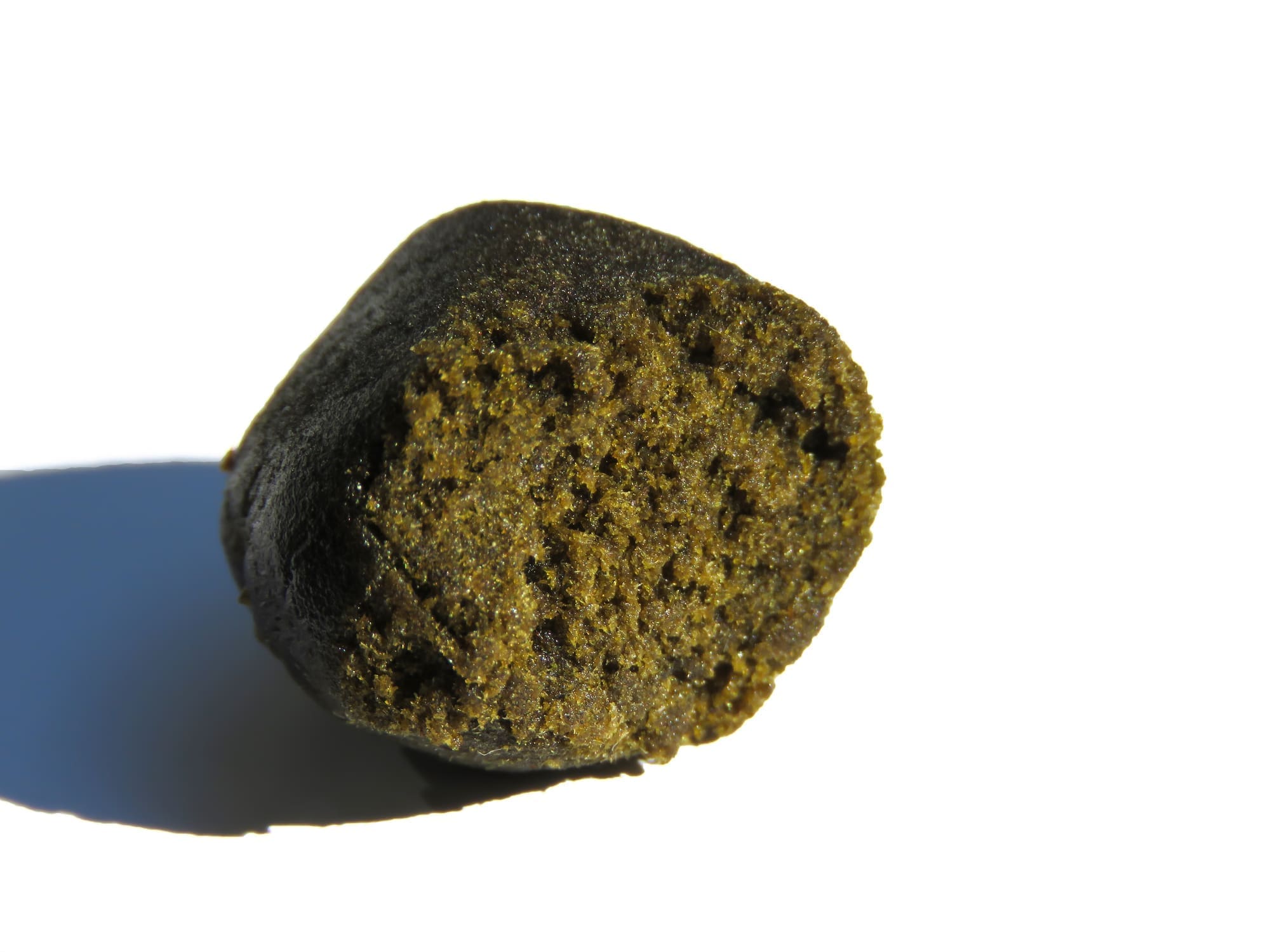
How Hashishene Terpene Enhances Medical Cannabis Efficacy
The unfolding narrative of cannabis’ therapeutic efficacy is richly interlaced with the study of terpenes, such as hashishene. An emerging subject in cannabis research, hashishene’s enthralling profile contributes to the potent entourage effect observed in cannabis-based therapeutics. Its interplay with cannabinoids could be essential in amplifying the therapeutic attributes of cannabis, potentially positioning this terpene as a pivotal component in medicinal applications.
Research delving into hashishene effects vigorously explores how this terpene may bolster the body’s reception to the healing properties of cannabinoids. The unique terpene profile of cannabis, containing hashishene, is posited to interact distinctively within the endocannabinoid system, thus potentially offering a specialized enhancement to cannabis’ medical potency.
While the hashishene review process continues to uncover layers of its potential impact, the excitement within the scientific community suggests anticipation of promising revelations on how terpenes like hashishene could revolutionize our understanding of cannabis’ therapeutic efficacy.
Techniques for Extracting and Identifying Hashishene
The employment of advanced chromatographic techniques marks the sophisticated realm of terpene extraction and identification. For scientists, the ability to pinpoint and quantify the presence of specific terpenes in cannabis is crucial, especially when it comes to hashishene cannabis terpene, a marker of authenticity and quality in hashish. This is achieved through meticulous methods that allow for the analysis of volatile constituents in cannabis resin, providing a detailed terpene profile.
Among these methods, gas chromatography mass spectrometry (GC-MS) stands as a cornerstone for extracting cannabis terpenes, allowing researchers to detect the intricate components within. This is synergistically utiliszd with two-dimensional gas chromatography (GC×GC-MS), which furthers our ability to discern the nuanced traits of hashishene. To complement these technologies, headspace solid-phase microextraction (HS-SPME) can be integrated, serving as a prelude to the chromatographic process. This combination not only facilitates the extraction but is vital in identifying hashishene, distinguishing it from its precursors and sibling compounds.
The process hinges on the understanding that hashishene’s formation results from the photo-oxidation of beta-myrcene when cannabis is subjected to UV light, a condition best met during the traditional preparation of hashish. By leveraging these precise analytic approaches, hashishene can thus be isolated and studied, expanding our comprehension of its distinctive characteristics within the cannabis terpene landscape.
Applications Beyond the Cannabis Plant
The terpene known as hashishene, while primarily linked to cannabis due to its emergence from the natural hydrocarbon beta-myrcene, has potential applications that extend into various industries. Not just confined as volatile in cannabis, hashishene’s unique organic compounds may well contribute to the enhancement of fragrances or become integrated into holistic health practices as part of organic phyto complex formulations. This versatility underscores the opportunities to utilize hashishene beyond its conventional realm, mapping out new territories for this compound to influence.
- Potential inclusion in perfumery and aromatic product lines, capitalizing on its distinct scent
- Possibilities for adoption within holistic and alternative therapeutic practices
- Experimental utilization in the creation of flavorings and food additives
- Investigations into the medicinal properties akin to those attributed to other terpenes
The exploration of hashishene applications is nascent but promises to unlock innovative pathways for this terpene to impact sectors such as the fragrance industry and alternative medicine. As research unfolds, the scope for hashishene to influence product design and therapeutic interventions expands, signalizing a new chapter for natural hydrocarbons in scientific inquiry and commercial enterprise.
Understanding the Status of Hashishene in Global Markets
In the swiftly expanding global cannabis market, the rarity and the cultural provenance of hashishene confer upon it a unique place. This intriguing terpene, born from the sunlight-infused artisanry of Moroccan hash production, remains relatively uncharted in mainstream cannabis offerings. Predominantly found in locales steeped in time-honored hash-making traditions, hashishene’s nuanced attributes are yet to be fully embraced by the broader cannabis industry.
Amidst the burgeoning diversification of cannabis terpenes, hashishene’s status as a sought-after component illustrates the evolving demands and interests of consumers and connoisseurs alike. The market’s increasingly sophisticated palate galvanizes research into the nuanced effects and applications of this and other terpenes. Consequently, the cannabis sector is witnessing the potential of such unique compounds to shape future trends, drive innovation in product formulation, and even catalyse niche cannabis-tourism ventures that celebrate traditional hashish craftsmanship.
- Intriguing niche within the global cannabis market
- Distinctive to traditional Moroccan hashish production processes
- Limited mainstream proliferation, with regional market boundaries
- A catalyst for novel market trends and reginal cannabis tourism
- Central to innovation in the cannabis industry product development
The allure of hashishene extends beyond mere olfactory satisfaction; it represents an intersection of cultural heritage and modern science. With an eager market poised for distinctive cannabis experiences, hashishene’s future within global commerce is as vibrant as the terpene’s own storied past.
Emerging Studies and Potential Discoveries Ahead
As we delve deeper into hashishene research, a terpene unique to cannabis, exciting prospects emerge on the horizon of scientific discovery. The complexity inherent in hashishene’s formation through photo-oxidation opens the door to numerous potential discoveries that could further our grasp of terpene synthesis both within and beyond the confines of Cannabis sativa.
Comprehensive cannabis studies focusing on the less-explored aspects of photo-oxidation implicate far-reaching implications for the pharmaceutical and botanical sectors. With the integration of advanced analytics, studies aim to decipher the nuances of hashishene’s interactions with other compounds, providing a springboard for novel approaches in therapeutic applications and the broader utilization of terpenes.
The conjectured hashishene benefits are not solely restricted to the enhancement of the cannabis experience. These benefits signify the potential for medicinal breakthroughs, offering alternative remedies to conventional treatments. Herein lies the invigorating promise of hashishene — as a pivot point for bridging traditional knowledge and contemporary science.
| Research Area | Focus | Expected Outcomes |
|---|---|---|
| Photo-Oxidation Mechanisms | Understanding the photo-chemical pathways leading to hashishene synthesis. | Unearthing biochemical processes applicable to plant biology and pharmacology. |
| Therapeutic Applications | Exploring hashishene’s potential synergy with cannabinoids and other terpenes. | Development of targeted therapeutic modalities for a variety of ailments. |
| Product Profiling | Analytical chemotyping of hashishene in various cannabis derivatives. | Refined product categorization facilitating consumer choice and research frameworks. |
In anticipation of what the future holds, it’s clear that the stigmas of the past are giving way to an age where the hidden virtues of compounds like hashishene are illuminated through the relentless quest of science. The forthcoming research endeavours not only promise to enrich our comprehension but also harness the untapped potential that lies within Cannabis sativa and, by extension, its myriad of aromatic terpenes.
Reflecting on Hashishene’s Place in the World of Cannabis Terpenes
In the expansive realm of cannabis terpenes, hashishene claims a distinctive role, remarkable both for its sensory contribution and its unique genesis. It is a testament to how age-old techniques seamlessly merge with contemporary scientific insights to further our appreciation of the cannabis experience. Hashishene’s emergence from traditional hash-making methods not only underscores the richness of cultural heritage but also propels it to a celebrated position within the world of cannabis terpenes.
As hashishene reviews unfold, this terpene continues to captivate users and researchers alike, offering a singular chapter in the story of cannabis terpenes. Its ability to lend traditional hashish its well-known earthy aroma and flavor enriches the terpene portfolio available to connoisseurs, providing a tangible link to the sun-soaked climes of Morocco. This tangible connection between place and sensory perception underscores the intricate tapestry that defines the world of cannabis.
Transcending its roots, the hashishene place in the cannabis industry symbolizes a broader narrative. It invites us to consider how each terpene intricately influences the cannabis experience, potentially opening avenues for targeted therapeutic applications and personalized cannabis encounters. As we continue delving into the qualities that make hashishene an integral part of cannabis culture, its story exemplifies an enduring curiosity and a drive for innovation in the understanding of the cannabis plant.
